Picture this: it’s a Saturday in the late ’90s, the kind where cereal milk is still on your pajama shirt, and the TV glow feels like a portal.
Suddenly, Michael Jordan isn’t just flying across the NBA court, he’s standing shoulder to shoulder with Bugs Bunny. That mash-up of worlds was so wild it almost felt like your toy box had exploded onto the big screen.
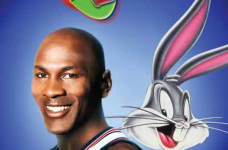
Ever catch yourself replaying that first watch in your head?
The VHS tape clunking into the player, the soundtrack blasting, and that sense of “wait, this is actually happening”?
You weren’t imagining it. Space Jam really did capture lightning in a bottle.
It took two things we loved most, basketball and Saturday morning cartoons, and stitched them together in a way that made absolute sense to our kid brains.
Looking back now, it’s easy to see why we still smile when someone even hums “I Believe I Can Fly.”
I’ll be honest, I remember being floored when Jordan stretched his arm half the court just to dunk. My friends and I tried to mimic it on the school playground, convinced if we reached far enough, maybe we’d pull it off too.
Spoiler: none of us did. But that was the magic.
Space Jam wasn’t just a movie. It was a shared moment, an unspoken membership card for anyone who grew up in that era.
So, pull up a chair. We’re about to rewind to the world of aliens, Looney Tunes, and one of the most unforgettable crossovers in pop culture history.
The “Hare Jordan” and “Aerospace Jordan” ads from 1992–93 paired Michael Jordan with Bugs Bunny. Kids loved them. Adults remembered Bugs from their own childhood. The spots were so popular that Warner Bros. realized Bugs and company still had juice.
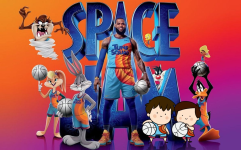
Producer Ivan Reitman saw the potential for a full-length crossover film, and the studio gave the green light. Timing wasn’t random. Jordan had briefly retired from basketball in 1993 and returned in 1995. His comeback made headlines worldwide.
Folding that real-life story into a cartoon showdown gave the project a built-in hook.
In that environment, combining the most famous athlete on Earth with the Looney Tunes wasn’t just clever. It felt inevitable.
Jordan himself was more than a sports figure. He was a global brand, an aspirational hero for millions of kids. Meanwhile, Looney Tunes had started to fade from Saturday morning lineups. Space Jam became a way to refresh their image for a new generation.
Here are some notable achievements of Space Jam movie:
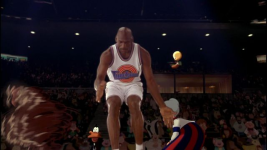
Photo Credit: Sportern
By 1996, he wasn’t just an athlete; he was a global icon. The movie tapped into his short-lived baseball career, his return to basketball, and the idea that he could literally save the day.
For kids, seeing Jordan on screen with Bugs Bunny wasn’t strange. It was natural. His calm confidence balanced out the cartoon chaos.
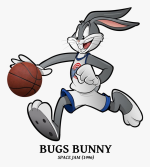
He’s the trickster, always cool under pressure, always ready with a one-liner. For decades, Bugs had been Warner Bros.’ mascot. Space Jam kept that role intact. His chemistry with Jordan carried the story, showing that even a rabbit with a Brooklyn accent could coach the greatest player alive.
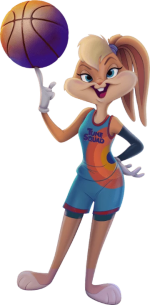
She brought a mix of toughness and style, instantly becoming a fan favorite. Her “don’t call me doll” line defined her character and gave girls in the audience a hero of their own. She also sparked debates about character design and gender representation in cartoons; something that still lingers today.
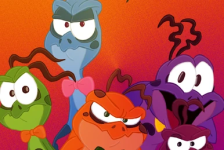
But after stealing the talent of NBA stars like Charles Barkley and Patrick Ewing, they transformed into the hulking Monstars. Their design was both comical and intimidating, a perfect foil to the Tune Squad. They weren’t just cartoon bad guys; they embodied every playground bully who looked twice your size.
Wayne Knight played Stan Podolak, Jordan’s bumbling assistant, offering comic relief. Bill Murray showed up in a surprise role, playing himself with tongue-in-cheek humor.
And of course, the real NBA legends; Barkley, Muggsy Bogues, Ewing, Shawn Bradley, and Larry Johnson; added authenticity. Their talent being stolen created one of the film’s funniest subplots, with scenes of them struggling at hospitals, gyms, and even in therapy.
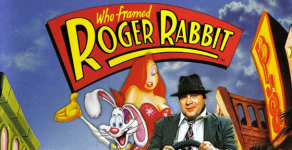
Roger Rabbit pulled it off with a noir twist, featuring private eyes, femme fatales, and slapstick gags. Compared to Space Jam, it was darker and more adult-oriented. Yet both films proved that with clever writing and sharp animation, the real and animated worlds could collide seamlessly.
It brought Bugs and Daffy back into live-action chaos, this time paired with Brendan Fraser and Jenna Elfman. The result? A fun but less impactful film. Where Space Jam had Michael Jordan as a cultural anchor, Back in Action lacked a single star to tie it all together.
Fans often compare it as a “what if” experiment that never quite clicked.
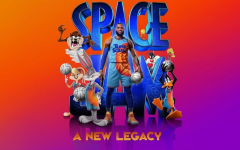
The sequel leaned heavily on Warner Bros.’ entire catalog, from Batman to Game of Thrones. The film delivered spectacle but divided fans. Some loved the modern graphics and callbacks, while others felt the original’s magic was lost under too much IP overload. The comparisons to the 1996 version still stir debates online.
Outside of Looney Tunes, the ’90s thrived on mashups. Pokémon blended games, anime, and toys into one juggernaut. The NBA Jam arcade game exaggerated basketball physics much like the Tune Squad’s cartoon antics.
Even MTV’s Celebrity Deathmatch played with the same idea: larger-than-life figures thrown into surreal arenas. These crossovers highlight how Space Jam was part of a broader trend of mixing genres and worlds for maximum fun.
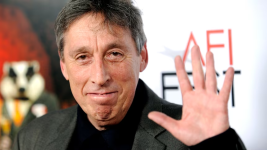
Photo Credit: ABC News
Reitman asked for advice on blending animation with live-action. Zemeckis didn’t sugarcoat it: “Don’t do it, it nearly killed me.” That line shows how risky this type of filmmaking was, even after Roger Rabbit’s success.
The warning makes Space Jam’s achievement even more impressive.
He’d already shown his love for basketball culture in films like He Got Game. But Warner Bros. reportedly kept him out, still upset over his independent fundraising for Malcolm X.
Imagine how different the movie’s tone could have been with Spike’s voice in the mix.
The filmmakers had written him into the script, but he held out until Michael Jordan personally asked him. Murray’s deadpan humor ended up being a highlight.
His last-minute entrance into the final game felt like the ultimate wink to the audience.
Names like Dennis Hopper were considered. Had that gone through, the movie would have had a very different feel; more menacing than cartoonishly evil. In the end, animation fit the zany energy better.
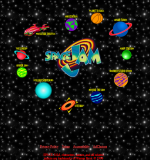
With grainy GIFs and neon backgrounds, it became a time capsule of early internet culture. Fans rediscovered it around 2010, and it became a nostalgia trip all its own. For many, the site’s survival proved that Space Jam wasn’t just a film; it was part of web history.
He’d stepped away from basketball after his father’s death to chase a baseball dream. In the film, that same detour is part of the setup. The Tune Squad gave him another chance to return to the game he was born to play.
Kids who watched saw a lesson wrapped in comedy: you can stumble, but you can also come back stronger.
The Tune Squad looked ridiculous compared to the towering Monstars. It was David and Goliath in sneakers. Yet every kid watching felt the same thrill: even the smallest or silliest team can stand up to the biggest bullies.
That underdog energy still resonates, whether you’re facing a tough opponent on the court or a challenge in real life.
The ’90s were noisy with commercials, crossovers, and big brand tie-ins.
But Space Jam managed to turn that chaos into magic. Watching Bugs Bunny pass the ball to Michael Jordan was escapism at its purest. It wasn’t about realism; it was about the joy of two worlds colliding, making kids believe that anything was possible.
Of course, some critics pointed out the obvious: Space Jam was one big ad.
Nike, Looney Tunes, NBA stars, even McDonald’s got a piece of the pie. But here’s the twist. The film blurred the line so cleverly that audiences didn’t care. The spectacle, the jokes, and the heart overpowered the marketing machine.
Instead of feeling sold to, kids walked away feeling inspired.
With a $250 million global box office, it quickly became one of the highest-grossing sports movies of its time. But the real windfall came from merchandise.
Toys, jerseys, Air Jordans with Bugs Bunny branding, even Happy Meals turned the film into a retail juggernaut. Altogether, the franchise is estimated to have generated around $6 billion in revenue. For many kids, the memorabilia; whether a Tune Squad shirt or a Monstars toy, outlived the movie itself.
The soundtrack was more than background music. R. Kelly’s “I Believe I Can Fly” became an anthem of the late ’90s, winning Grammys and dominating radio.
Seal’s cover of “Fly Like an Eagle” gave a new generation a soulful groove. Hip-hop fans still smile at “Hit ’Em High,” a track that united Busta Rhymes, LL Cool J, Coolio, Method Man, and B-Real. These songs carried the movie’s energy long after the credits rolled.
Before Space Jam, mixing live actors with cartoons was rare and technically daunting.
After its success, studios realized there was an appetite for more hybrids. While not every project matched its charm, Space Jam proved that sports stories could be stretched into fantasy and still work. It also cemented the idea that athletes could headline films as themselves without needing to play a fictional role.
The movie’s afterlife took on a new form in the digital age.
The original SpaceJam.com, left online for decades, became an early internet time capsule. Fans flocked back to it in the 2010s, sharing its clunky GIFs and neon graphics as nostalgia fuel. Memes about the Monstars “stealing talent” spread across Twitter and TikTok. Each anniversary brought waves of rewatches, reminding everyone just how bizarre yet beloved the film was.
From cameos in Teen Titans Go! to running jokes in NBA commentary, Space Jam still gets name-dropped.
Even the 2021 sequel sparked debates that dragged the original back into the spotlight. For a single film released in 1996, its staying power is remarkable. It didn’t just blend cartoons and basketball; it cemented itself as shorthand for a whole era of childhood wonder.
That spark of wonder doesn’t fade; it lingers, ready to light up again whenever we look back.
We’ve traced the origin stories, replayed the game’s wildest moments, and remembered the soundtrack that still sneaks into our playlists.
We’ve laughed at Bill Murray’s cameo, marveled at Jordan’s stretched-out dunk, and nodded along to the underdog spirit of the Tune Squad. And through it all, one truth sticks: Space Jam wasn’t just a movie. It was a shared memory, a collective high-five from our childhoods.
So here we are; older, maybe a little wiser, but still carrying that same spark.
We’ve cheered, we’ve remembered, and we’ve recognized how a single film stitched together basketball, cartoons, and pure imagination.
Now take that feeling with you. Hold onto it. Because once you’ve flown with the Tune Squad, you’ll never really come back down.
What do you remember about Space Jam?
Suddenly, Michael Jordan isn’t just flying across the NBA court, he’s standing shoulder to shoulder with Bugs Bunny. That mash-up of worlds was so wild it almost felt like your toy box had exploded onto the big screen.

Ever catch yourself replaying that first watch in your head?
The VHS tape clunking into the player, the soundtrack blasting, and that sense of “wait, this is actually happening”?
You weren’t imagining it. Space Jam really did capture lightning in a bottle.
It took two things we loved most, basketball and Saturday morning cartoons, and stitched them together in a way that made absolute sense to our kid brains.
Looking back now, it’s easy to see why we still smile when someone even hums “I Believe I Can Fly.”
I’ll be honest, I remember being floored when Jordan stretched his arm half the court just to dunk. My friends and I tried to mimic it on the school playground, convinced if we reached far enough, maybe we’d pull it off too.
Spoiler: none of us did. But that was the magic.
Space Jam wasn’t just a movie. It was a shared moment, an unspoken membership card for anyone who grew up in that era.
So, pull up a chair. We’re about to rewind to the world of aliens, Looney Tunes, and one of the most unforgettable crossovers in pop culture history.
The Genesis of Space Jam and how It Came to Life
The seed for Space Jam was planted not in a Hollywood boardroom, but in a Nike commercial.The “Hare Jordan” and “Aerospace Jordan” ads from 1992–93 paired Michael Jordan with Bugs Bunny. Kids loved them. Adults remembered Bugs from their own childhood. The spots were so popular that Warner Bros. realized Bugs and company still had juice.

Producer Ivan Reitman saw the potential for a full-length crossover film, and the studio gave the green light. Timing wasn’t random. Jordan had briefly retired from basketball in 1993 and returned in 1995. His comeback made headlines worldwide.
Folding that real-life story into a cartoon showdown gave the project a built-in hook.
- Los Angeles premiere: November 10, 1996
- U.S. theatrical release: November 15, 1996
- Running time: 87 minutes
- Worldwide box office: $250.2 million against an $80 million budget
In that environment, combining the most famous athlete on Earth with the Looney Tunes wasn’t just clever. It felt inevitable.
Jordan himself was more than a sports figure. He was a global brand, an aspirational hero for millions of kids. Meanwhile, Looney Tunes had started to fade from Saturday morning lineups. Space Jam became a way to refresh their image for a new generation.
Here are some notable achievements of Space Jam movie:
- First feature film produced by Warner Bros. Feature Animation
- Broke records for live-action and animation compositing shots (over 1,000)
- Spawned a soundtrack that went 6x Platinum, with R. Kelly’s “I Believe I Can Fly” winning multiple Grammys
The Characters That Made Space Jam a Hit Back Then
Michael Jordan
At the center of it all was Michael Jordan, playing himself.
Photo Credit: Sportern
By 1996, he wasn’t just an athlete; he was a global icon. The movie tapped into his short-lived baseball career, his return to basketball, and the idea that he could literally save the day.
For kids, seeing Jordan on screen with Bugs Bunny wasn’t strange. It was natural. His calm confidence balanced out the cartoon chaos.
Bugs Bunny
Bugs was the brains of the Tune Squad.
He’s the trickster, always cool under pressure, always ready with a one-liner. For decades, Bugs had been Warner Bros.’ mascot. Space Jam kept that role intact. His chemistry with Jordan carried the story, showing that even a rabbit with a Brooklyn accent could coach the greatest player alive.
Lola Bunny
Introduced for the first time in this film, Lola was the sleek, skilled new recruit.
She brought a mix of toughness and style, instantly becoming a fan favorite. Her “don’t call me doll” line defined her character and gave girls in the audience a hero of their own. She also sparked debates about character design and gender representation in cartoons; something that still lingers today.
The Monstars & Nerdlucks
The villains started as tiny, goofy aliens known as the Nerdlucks.
But after stealing the talent of NBA stars like Charles Barkley and Patrick Ewing, they transformed into the hulking Monstars. Their design was both comical and intimidating, a perfect foil to the Tune Squad. They weren’t just cartoon bad guys; they embodied every playground bully who looked twice your size.
Wayne Knight played Stan Podolak, Jordan’s bumbling assistant, offering comic relief. Bill Murray showed up in a surprise role, playing himself with tongue-in-cheek humor.
And of course, the real NBA legends; Barkley, Muggsy Bogues, Ewing, Shawn Bradley, and Larry Johnson; added authenticity. Their talent being stolen created one of the film’s funniest subplots, with scenes of them struggling at hospitals, gyms, and even in therapy.
What Other Movies Back Then Compare to Space Jam?
Who Framed Roger Rabbit (1988)
Before Space Jam, audiences had already seen cartoons mixing with live actors.
Roger Rabbit pulled it off with a noir twist, featuring private eyes, femme fatales, and slapstick gags. Compared to Space Jam, it was darker and more adult-oriented. Yet both films proved that with clever writing and sharp animation, the real and animated worlds could collide seamlessly.
Looney Tunes: Back in Action (2003)
Warner Bros. tried to strike gold again with Back in Action.It brought Bugs and Daffy back into live-action chaos, this time paired with Brendan Fraser and Jenna Elfman. The result? A fun but less impactful film. Where Space Jam had Michael Jordan as a cultural anchor, Back in Action lacked a single star to tie it all together.
Fans often compare it as a “what if” experiment that never quite clicked.
Space Jam: A New Legacy (2021)
Fast forward to the 2020s, and LeBron James stepped into Jordan’s sneakers.
The sequel leaned heavily on Warner Bros.’ entire catalog, from Batman to Game of Thrones. The film delivered spectacle but divided fans. Some loved the modern graphics and callbacks, while others felt the original’s magic was lost under too much IP overload. The comparisons to the 1996 version still stir debates online.
Outside of Looney Tunes, the ’90s thrived on mashups. Pokémon blended games, anime, and toys into one juggernaut. The NBA Jam arcade game exaggerated basketball physics much like the Tune Squad’s cartoon antics.
Even MTV’s Celebrity Deathmatch played with the same idea: larger-than-life figures thrown into surreal arenas. These crossovers highlight how Space Jam was part of a broader trend of mixing genres and worlds for maximum fun.
Top 5 Little-Known Facts About Space Jam that You Didn't Know
1. Ivan Reitman’s Warning from Robert Zemeckis
When producer Ivan Reitman was planning Space Jam, he reached out to Robert Zemeckis, director of Who Framed Roger Rabbit.
Photo Credit: ABC News
Reitman asked for advice on blending animation with live-action. Zemeckis didn’t sugarcoat it: “Don’t do it, it nearly killed me.” That line shows how risky this type of filmmaking was, even after Roger Rabbit’s success.
The warning makes Space Jam’s achievement even more impressive.
2. Spike Lee Was Blocked from Helping
Spike Lee wanted to contribute to the script.He’d already shown his love for basketball culture in films like He Got Game. But Warner Bros. reportedly kept him out, still upset over his independent fundraising for Malcolm X.
Imagine how different the movie’s tone could have been with Spike’s voice in the mix.
3. Bill Murray’s Reluctant Cameo
Bill Murray wasn’t sold on joining at first.The filmmakers had written him into the script, but he held out until Michael Jordan personally asked him. Murray’s deadpan humor ended up being a highlight.
His last-minute entrance into the final game felt like the ultimate wink to the audience.
4. Swackhammer Could Have Been Live-Action
The villain, Mr. Swackhammer, voiced by Danny DeVito, was originally planned as a live-action role.Names like Dennis Hopper were considered. Had that gone through, the movie would have had a very different feel; more menacing than cartoonishly evil. In the end, animation fit the zany energy better.
5. The Website That Refused to Die
Here’s one of the strangest facts: SpaceJam.com, launched in 1996, stayed online for 25 years almost untouched.
With grainy GIFs and neon backgrounds, it became a time capsule of early internet culture. Fans rediscovered it around 2010, and it became a nostalgia trip all its own. For many, the site’s survival proved that Space Jam wasn’t just a film; it was part of web history.
A Deeper Look at the Space Jam and Why We Still Care
At its heart, Space Jam mirrored Michael Jordan’s own story.He’d stepped away from basketball after his father’s death to chase a baseball dream. In the film, that same detour is part of the setup. The Tune Squad gave him another chance to return to the game he was born to play.
Kids who watched saw a lesson wrapped in comedy: you can stumble, but you can also come back stronger.
The Tune Squad looked ridiculous compared to the towering Monstars. It was David and Goliath in sneakers. Yet every kid watching felt the same thrill: even the smallest or silliest team can stand up to the biggest bullies.
That underdog energy still resonates, whether you’re facing a tough opponent on the court or a challenge in real life.
The ’90s were noisy with commercials, crossovers, and big brand tie-ins.
But Space Jam managed to turn that chaos into magic. Watching Bugs Bunny pass the ball to Michael Jordan was escapism at its purest. It wasn’t about realism; it was about the joy of two worlds colliding, making kids believe that anything was possible.
Of course, some critics pointed out the obvious: Space Jam was one big ad.
Nike, Looney Tunes, NBA stars, even McDonald’s got a piece of the pie. But here’s the twist. The film blurred the line so cleverly that audiences didn’t care. The spectacle, the jokes, and the heart overpowered the marketing machine.
Instead of feeling sold to, kids walked away feeling inspired.
Space Jam Remains One of the Most Influential Movies of the '90s
Space Jam wasn’t just a hit at the theater.With a $250 million global box office, it quickly became one of the highest-grossing sports movies of its time. But the real windfall came from merchandise.
The soundtrack was more than background music. R. Kelly’s “I Believe I Can Fly” became an anthem of the late ’90s, winning Grammys and dominating radio.
Seal’s cover of “Fly Like an Eagle” gave a new generation a soulful groove. Hip-hop fans still smile at “Hit ’Em High,” a track that united Busta Rhymes, LL Cool J, Coolio, Method Man, and B-Real. These songs carried the movie’s energy long after the credits rolled.
Before Space Jam, mixing live actors with cartoons was rare and technically daunting.
After its success, studios realized there was an appetite for more hybrids. While not every project matched its charm, Space Jam proved that sports stories could be stretched into fantasy and still work. It also cemented the idea that athletes could headline films as themselves without needing to play a fictional role.
The movie’s afterlife took on a new form in the digital age.
The original SpaceJam.com, left online for decades, became an early internet time capsule. Fans flocked back to it in the 2010s, sharing its clunky GIFs and neon graphics as nostalgia fuel. Memes about the Monstars “stealing talent” spread across Twitter and TikTok. Each anniversary brought waves of rewatches, reminding everyone just how bizarre yet beloved the film was.
From cameos in Teen Titans Go! to running jokes in NBA commentary, Space Jam still gets name-dropped.
Even the 2021 sequel sparked debates that dragged the original back into the spotlight. For a single film released in 1996, its staying power is remarkable. It didn’t just blend cartoons and basketball; it cemented itself as shorthand for a whole era of childhood wonder.
Back to the Court of Memory
Ever find yourself wishing you could rewind to a Saturday morning, cereal bowl in hand, when Michael Jordan soared across the screen with Bugs Bunny by his side?That spark of wonder doesn’t fade; it lingers, ready to light up again whenever we look back.
We’ve traced the origin stories, replayed the game’s wildest moments, and remembered the soundtrack that still sneaks into our playlists.
We’ve laughed at Bill Murray’s cameo, marveled at Jordan’s stretched-out dunk, and nodded along to the underdog spirit of the Tune Squad. And through it all, one truth sticks: Space Jam wasn’t just a movie. It was a shared memory, a collective high-five from our childhoods.
So here we are; older, maybe a little wiser, but still carrying that same spark.
We’ve cheered, we’ve remembered, and we’ve recognized how a single film stitched together basketball, cartoons, and pure imagination.
Now take that feeling with you. Hold onto it. Because once you’ve flown with the Tune Squad, you’ll never really come back down.
What do you remember about Space Jam?


